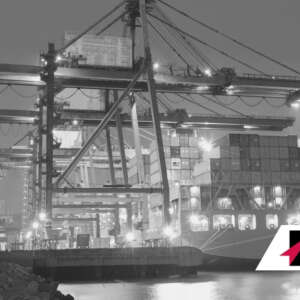Record backlogs of containers at ports around the world are creating a scenario that is ideal for cargo theft. Whether on a truck, at a port, airport, or warehouse, shipments are particularly vulnerable to theft. Because supply chains are so complex, it is especially important to have security measures, procedures, and protocols in place to minimize risk.
Idle Freight Means Increased Theft
The backlog across all forms of transportation right now is causing containers and shipments to sit idle. With containers sitting for days inside and outside the ports, cargo theft is on the rise. Idle freight also complicates how to protect it. Scott Cornell, transportation, crime, and theft specialist at Travelers states, “Supply chain backups create more complexities around cargo theft too when you have more of it sitting in more places. You also create more locations geographically where the thefts occur. You have a harder time pinpointing where you’re going to see it and where you need to protect yourself above all other areas.”
While cargo theft was historically focused on high-value items like electronics, once shippers responded by implementing measures to secure these types of shipments, cargo thieves shifted to lower-value cargo.
How Cargo is Stolen
There are several ways that cargo is stolen. As cargo transporters have found better ways to protect their shipments, thieves have found better ways to steal it.
Straight Cargo Theft: The cargo is stolen from right where it is. This often happens at truck stops or parking lots.
Strategic Cargo Theft: Strategy is used as a tactic to steal goods. Examples include fictitious pickups, identity theft, and fraudulent carriers as a means to deceive.
Cyber Attacks: Some cargo theft uses computer hacking techniques such as malware to gain access to shipping companies’ confidential delivery information.
Pilferage: This type of theft, which is becoming more prevalent, involves raiding shipments where the vehicle is parked. Unless the driver examines the shipment at each stop, they will not realize the goods are gone.
Steps to Increase Cargo Security
There are many factors that affect cargo security, and while not all of them are controllable, shippers can increase the security of their cargo. Cargo security involves a coordinated approach that uses technology and extensive staff training:
GPS Tracking: GPS systems can be installed to accompany products on trailers. This tracking technology uses geofencing, which allows users to define geographical boundaries so if a truck goes beyond a certain route radius, an alarm is sounded. The driver is contacted to determine why the truck left its course. Technology also allows a truck to be shut down remotely if necessary so if a truck is stolen, it can be stopped from moving.
A Multi-Layer Approach: Cargo theft requires a multi-layer approach that is customized to each company and situation. It must incorporate strategies at every level of the organization, and outside the organization as well. Good relationships with business partners will reduce the chance for inside jobs. Properly training employees to detect signs of theft or with a high-value freight training certification will help prevent it from happening.
C-TPAT Membership: For international shipments, belonging to the Customs Trade Partnership Against Terrorism (C-TPAT) is one of the best steps an importer can take to ensure the security of their cargo. C-TPAT member works with U.S. Customs to protect their supply chain and expedites the processing of cargo.
Container Seal: For any shipments being sent via container, make sure you have a system in place to ensure that the seal numbers are checked once the container comes into the warehouse. The seal number must match the one that was provided by your supplier. If the seal has been tampered with, or the numbers do not match, and there was no customs examination, this may be an indication of theft.
Driver Security: Many companies have adopted processes that ensure that only contracted drivers are able to pick up merchandise. Logging the driver’s name and equipment numbers and taking pictures of the driver and license plate help to ensure the correct person is picking up a shipment. Employees should be trained to follow the protocols that have been put in place by your company and report any suspicious behavior.
Cargo theft cannot be avoided completely, especially as thieves develop new strategies to steal goods, but there are several steps your company can take to cut down on the frequency and severity of it.
Your Trusted Partner
At Red Arrow Logistics, we provide expertise and white glove customer service with fast-growing, complex, and high-value supply chains. As the next-generation model of logistics companies, we offer tailored transportation and logistics solutions — from single shipments to complex over-dimensional and international orders.
Red Arrow offers the scale and scope of services including air, ocean, and ground transportation to meet the budget and schedule requirements of the largest and smallest companies alike. If we can be of assistance, please email us at info@redarrowlogistics.com or give us a call at 425-747-7914.





